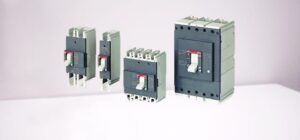
LV Circuit Breaker Testing: Understanding the Methods and Importance
At its core, a LV circuit breaker is a device that automatically interrupts an electrical circuit when it detects an excessive amount of current flowing through it. This is an important safety feature, as it helps to prevent electrical fires and other hazards. But like any piece of electrical equipment, circuit breakers can malfunction or degrade over time, which is why regular testing and maintenance is crucial.
In this article, we will discuss the various methods used to test low voltage (LV) circuit breakers, and why these tests are so important.
1. What is an LV Circuit Breaker?
An LV circuit breaker, also known as a low-voltage circuit breaker, is a device designed to protect electrical systems operating at a voltage below 600V. LV circuit breakers consist of two primary components: a trip unit and a set of contacts. During an overload, short circuit, or fault, the trip unit detects the current and opens the contacts.
2. Why is LV Circuit Breaker Testing Essential?
Regular LV circuit breaker testing is crucial for ensuring safe and reliable operation. Testing helps to identify any potential issues with the circuit breaker, such as faulty trip units, damaged contacts, or inadequate insulation. In the event that these issues are not identified, the system could be damaged, electrical fires could occur, and personnel could be injured.
3. Importance of LV Circuit Breaker Testing
There can be no overstatement of the importance of testing LV circuit breakers. Testing regularly helps identify potential problems before they become major ones, reducing costly downtime and repairs. In addition, testing can help to ensure that the circuit breaker is operating within its designed parameters, which can help to extend its service life.
But testing should not be limited to just the initial installation or after a repair has been made. Regular maintenance testing should be performed on a routine basis to ensure continued proper operation. The frequency of testing should be based on several factors, including the age of the equipment, the operating environment, and the criticality of the equipment to the operation of the facility.

To ensure the safe and reliable operation of electrical equipment, it is essential to understand the methods and importance of LV circuit breaker testing. It is possible to identify potential issues earlier by performing regular testing and maintenance, which can prevent costly downtime and repairs. Incorporate LV circuit breaker testing into your facility’s maintenance program, if you haven’t already.
4. Common LV circuit breaker testing methods
The following are the common LV circuit breaker testing methods:
4.1 Visual inspection
Visual inspection is the first step in LV circuit breaker testing. It involves a thorough examination of the circuit breaker for any physical damage, loose connections, or signs of wear and tear.
4.2 Mechanical operation test
Circuit breakers are tested for their mechanical operation during the mechanical operation test. For the circuit breaker to operate smoothly and efficiently, it must be opened and closed several times.
4.3 Contact Resistance Test
A circuit breaker’s contact resistance is measured by measuring the resistance between its stationary and moving contacts. Circuit breakers can be damaged or thrown out if their contact resistance is too high, which can lead to overheating.
4.4 Insulation Resistance Test
Insulation resistance tests measure the resistance of the insulation material used in circuit breakers. A low insulation resistance can cause leakage current, which can damage other circuit components.
4.5 Vacuum Bottle Integrity Test
A vacuum bottle integrity test is used to check for leaks in a circuit breaker’s vacuum bottle. Circuit breakers can arc and fail if there is a leak that causes a loss of vacuum.
4.6 Timing Test
The timing test measures the time it takes for the circuit breaker to interrupt the current flow after a fault occurs. This test is important because slow or incorrect timing can cause damage to other components in the circuit.
4.7 Minimum Pick-Up Test
The minimum pick-up test is used to determine the minimum current level at which the circuit breaker will trip. This test is important because if the circuit breaker does not trip at the correct current level, it may fail to protect the circuit from overload or short-circuit conditions.
4.8 Trip Unit Calibration Test
The trip unit calibration test is used to ensure that the trip unit of the circuit breaker is calibrated correctly. This test is important because an improperly calibrated trip unit can result in incorrect tripping or failure of the circuit breaker.
4.9 Primary Current Injection Test
The primary current injection test involves injecting a high current into the circuit breaker to test its ability to interrupt the current flow. This test is typically used for new installations or when the breaker has undergone a significant overhaul.
During the test, the breaker is disconnected from the power source and connected to a test set. The test set generates a high current, which is injected into the breaker. The current flow is then measured, and the breaker’s performance is evaluated based on its ability to interrupt the current flow.
4.10 Secondary Current Injection Test
The secondary current injection test is used to test the tripping mechanism of the breaker. This test is typically used for regular maintenance checks or when there is a suspicion of a problem with the breaker.
During the test, the breaker is connected to a test set that generates a low current. The current is then increased gradually to simulate an overload or short circuit. The tripping time of the breaker is then measured, and its performance is evaluated based on how quickly it responds to the simulated fault.
4.11 Dielectric withstand test
The dielectric withstand test checks the circuit breaker’s ability to withstand high voltages. It helps identify any insulation weaknesses or failures that can cause electrical accidents.
5. Specialized LV circuit breaker tests
Apart from the common testing methods, there are specialized tests that are necessary for certain types of LV circuit breakers:
5.1 Partial discharge test
The partial discharge test is used to detect and locate insulation defects in LV circuit breakers. It involves applying a high voltage to the circuit breaker and measuring the partial discharge current.
5.2 High current injection test
The high current injection test is used to verify the performance of the circuit breaker’s trip unit. It involves injecting a high current through the circuit breaker and measuring its response time and accuracy.
5.3 Dynamic contact resistance measurement (DRM) test
The DRM test is used to check the contact resistance of the circuit breaker’s contacts during the opening and closing operations. It involves injecting a current through the circuit breaker and measuring the voltage drop across its contacts.
6. LV circuit breaker maintenance
Regular maintenance of LV circuit breakers is crucial to ensure their safe and reliable operation. The following are some of the maintenance practices that can be performed on LV circuit breakers:
- Cleaning and lubrication of the circuit breaker’s operating mechanism
- Tightening of the circuit breaker’s connections
- Replacement of worn out or damaged parts
- Calibration of the circuit breaker’s trip unit
There are several types of tests that can be performed on LV circuit breakers, each with its own specific purpose. Let’s take a closer look at some of the most common tests.
7. Conclusion
Testing LV circuit breakers is crucial to ensuring their safe and reliable operation. By regularly testing equipment, faults can be detected and diagnosed, preventing equipment damage and electrical accidents. There are several testing methods available for LV circuit breakers, including visual inspection, mechanical operation test, contact resistance test, insulation resistance test, and dielectric withstand test. Specialized tests, such as partial discharge test, high current injection test, and DRM test, may also be necessary for certain types of circuit breakers. Regular maintenance practices can also be performed to keep the circuit breakers in good condition.
8. FAQs
How often should LV circuit breakers be tested?
LV circuit breakers should be tested at least once a year.
What is the purpose of the contact resistance test?
The contact resistance test helps identify any loose connections, corroded contacts, or faulty contact mechanisms in LV circuit breakers.
Can LV circuit breakers be tested while they are in operation?
No, LV circuit breakers should be tested when they are isolated from the power source.
What is the difference between MCBs and MCCBs?
MCBs are designed for low-current applications, while MCCBs are designed for higher current applications.
Can LV circuit breakers be repaired if they are faulty?
Yes, LV circuit breakers can be repaired if they are faulty. However, it is recommended to consult a professional electrician for repairs to ensure their safe and proper functioning.

Leave a Reply